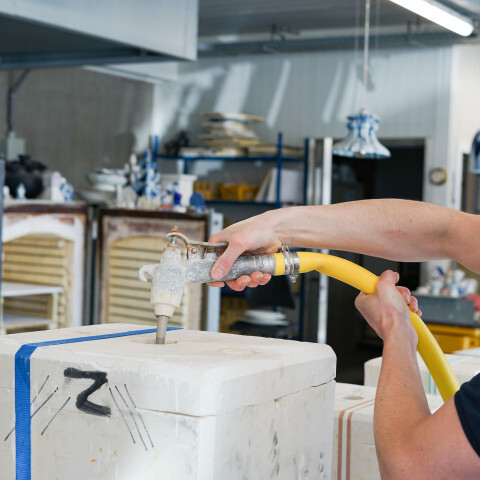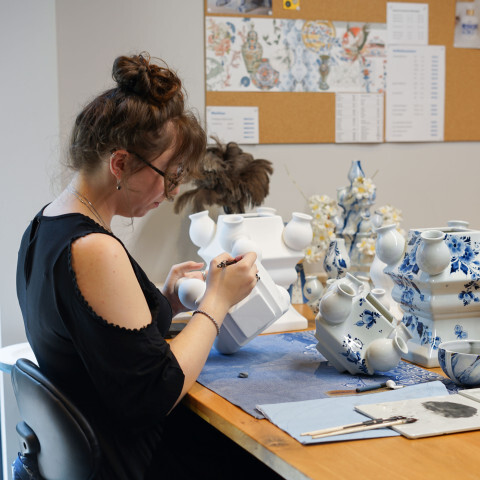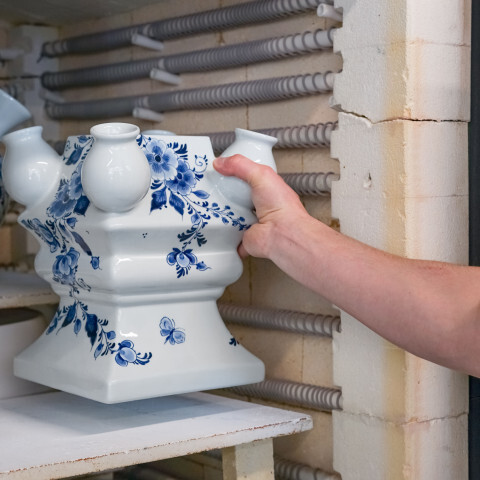Handmade vases from the Netherlands
Written by Annette O'Shea On 22 mei 2024

In a time of fast processes and digital techniques, we reach back to the crafts of the past. The handmade Made-Lief collection comes with new Delft blue products made with time, attention and love. Craft at its best!

Delft blue made with love
Delftware pottery is traditionally a product made with a great deal of knowledge and love for the craft. In a time when more and more fast techniques are used in factories far away from here, we consciously go back to where it all started. With time, attention and much knowledge of the product, making beautiful pure Delftware. Right here in the Netherlands. That is the essence of the Made-Lief collection. As the name suggests, it is a collection made with love and like the flower the daisy, Delft blue has become a national symbol for the Netherlands. All Delftware products in the Made-Lief collection are handmade in the authentic way that has been done for four hundred years.
"The Made-Lief collection is Delft blue in its purest form."
We think it is important that this special craft, which is an important part of our cultural heritage, continues to exist. We have also deliberately kept the decoration on the Made-Lief products very pure and clean. No unnecessary embellishments and frills, but Delft blue in its purest form. The blossom and petals are a typical decoration in the art of Delftware and it sometimes takes years for a master painter to master these forms. We also chose recognizable, traditional Delft blue vases for the models of the vases. Thanks to the pure decoration and clean lines, this collection has a very authentic as well as a modern look. Delft blue in its purest form.

Delft blue, a timeless craft
Delft blue pottery has been around for over four hundred years. It is a special craft that is instantly recognized around the world as something typically Dutch. Delftware porcelain originally came from Delft, where potters wanted to create their own variation on the Chinese blue-on-white porcelain that was wildly popular at the time. Those shiploads of porcelain from the Chinese porcelain cities were very fragile and during the long sea voyage, some shipments got damaged or sunk to the bottom of the ocean. Also, the Dutch who ordered porcelain from China did not always get what they had hoped for. That can be done more efficiently, they thought in Delft and the Delft blue porcelain was born. Via the water around Delft, the pottery was easily transported throughout the Netherlands and to other countries, and demand for Delftware skyrocketed.
The Delft blue magic factory
The special thing about a craft is that you need people's knowledge and skills. Something that is irreplaceable. For example, you cannot learn or study Delft blue painting anywhere, it is only passed down from master painter to apprentice and this internal training often takes years. The same goes for making the clay. Using carefully chosen raw materials from around the world, we mix our own clay at Heinen Delfts Blauw. We also make our own paint, which takes a week to make. We pour the clay into molds and let it dry just long enough so that the outer layer is hard, but the inside is still liquid. This creates a beautiful vase that is neither too thick nor too thin. This is all knowledge we have accumulated over the years through endless trial and error. The raw vase is then polished and we apply a layer of engobe to the outside. This is a thin layer of liquid clay, which makes the surface suitable for painting. After the painting, the vase is given a layer of glaze after which it goes into the kiln to be baked at a high temperature of about 1060 degrees Fahrenheit. The charcoal-colored paint now turns into the iconic Delft blue color thanks to the glaze. Like some school children remarked during their tour of our factory; "it is like a magic factory!"
How a Made-Lief vase is made:

1. From inspiration to creation

2. Ceramic casting


3. Painted by hand

4. The vase is finished!
Learn how to paint Delftware
By purchasing a product from the Made-Lief collection you support the preservation of this special craft and bring a piece of valuable cultural heritage into your home. If you would like to see with your own eyes how we make this collection and other unique Delft blue products, please visit our Concept Store in Delft. Here we show the complete manufacturing process. It is also possible to take a Delft blue painting workshop with one of our master painters or for the advanced painter it is possible to take a Delft blue painting master class. We would love to introduce you to and make you fall in love with this special craft.



